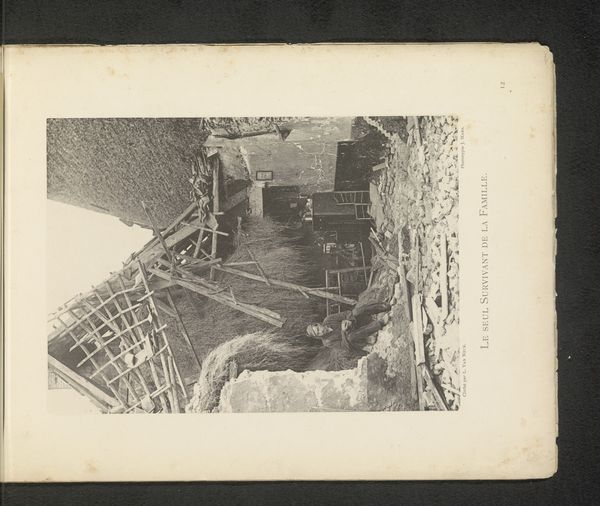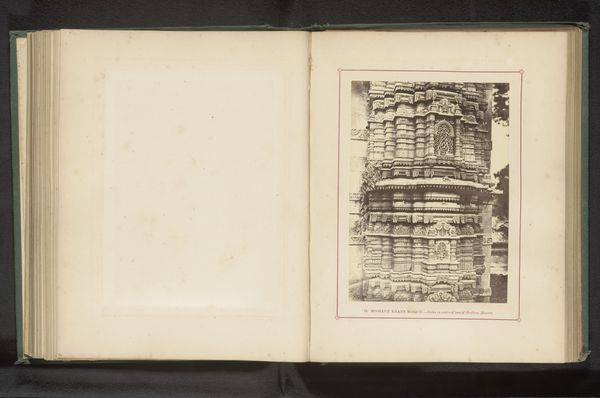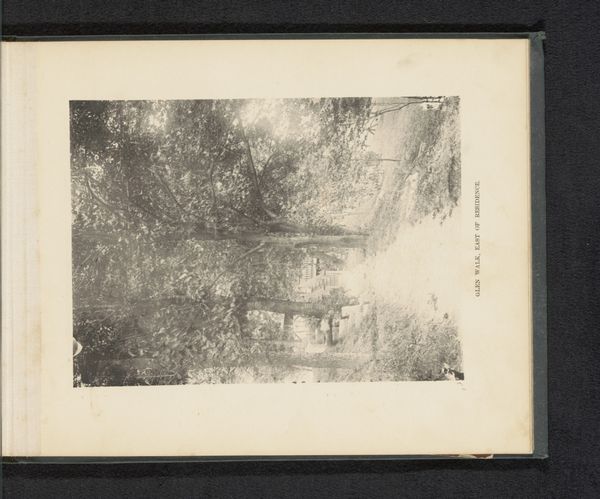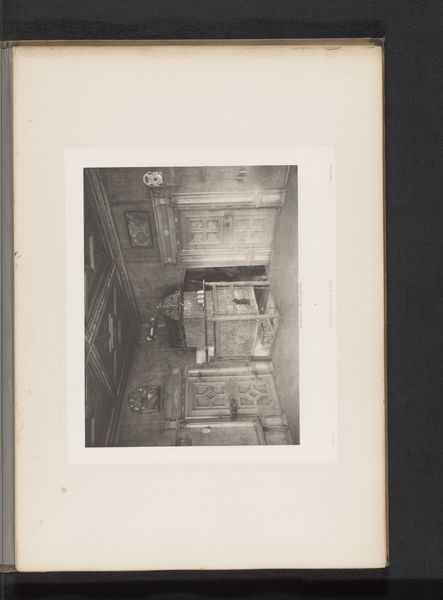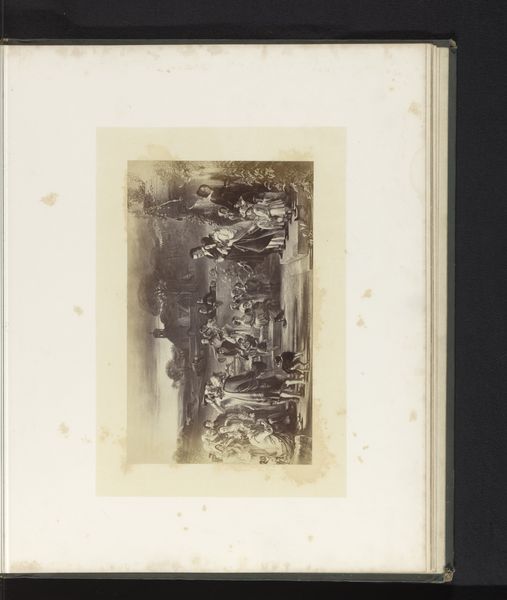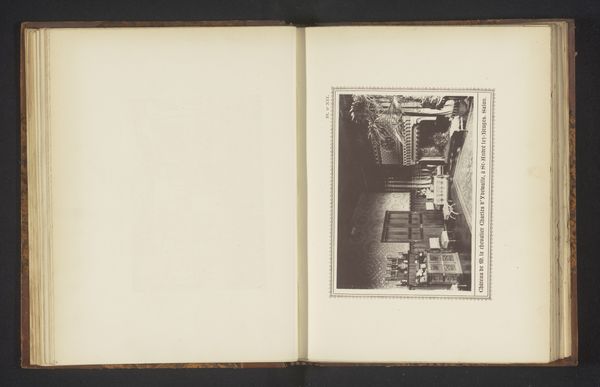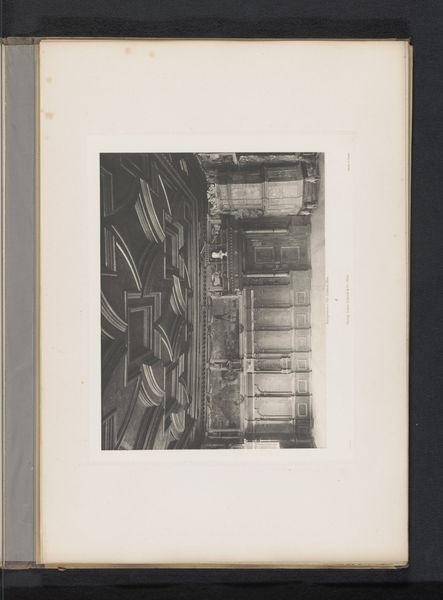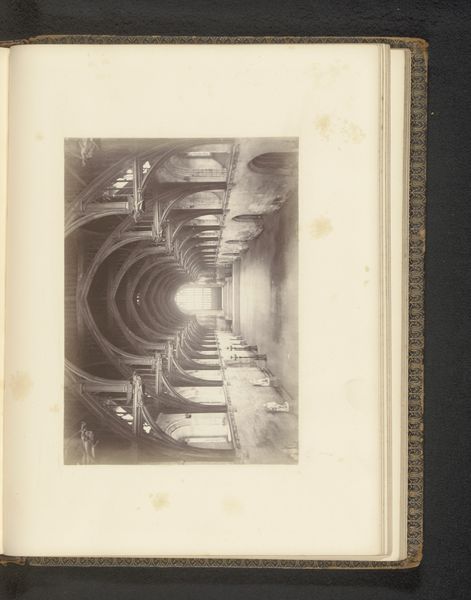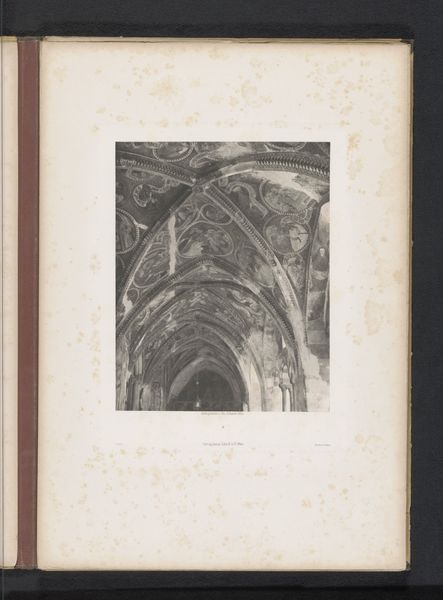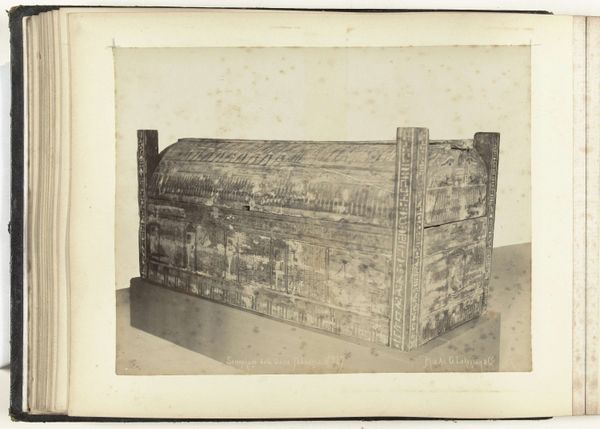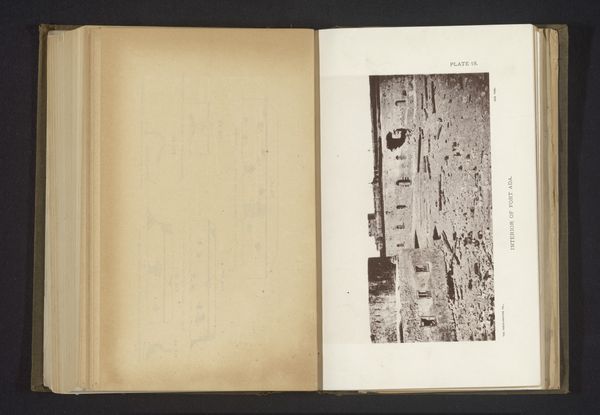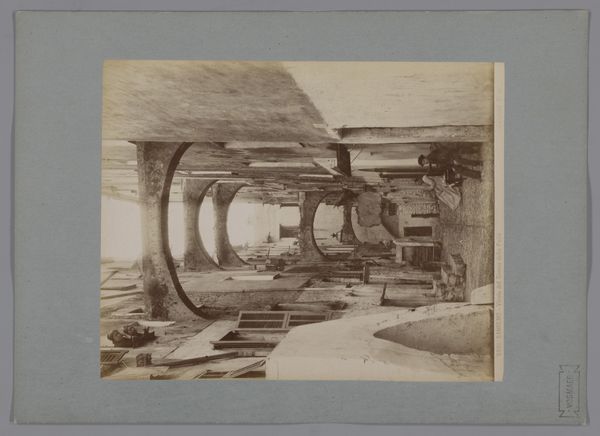
print, intaglio, photography
# print
#
intaglio
#
landscape
#
photography
#
geometric
#
ancient-mediterranean
#
islamic-art
Dimensions: height 149 mm, width 209 mm
Copyright: Rijks Museum: Open Domain
Curator: This photographic print from around 1900, taken by K.H. Mawal, offers an intimate view of the dome's interior within the Sasbahu Temple. The medium is intaglio print and, seeing this, what jumps out at you? Editor: The overwhelming detail. It's a close crop, yes, but imagine standing there, craning your neck. It must have been overwhelming to carve. Look at the labor that went into this--into *each* stone, line by line. Curator: Absolutely! It feels almost like a hidden world, doesn’t it? Mawal has framed it in a way that feels very enclosed. The ancient geometry, the spiraling forms. Editor: It raises questions. Were these designs conceived beforehand? Were there hierarchies in the artisans' workshop, and who conceived it? I mean, look at it from that perspective— the consumption of tools and raw materials, and the conditions these folks must have worked under to deliver this. Curator: It invites one to wonder, doesn’t it? A testament to faith and also the collective human effort that built it. A quiet space where time seems to slow down. Editor: It’s about more than religion or history. I think Mawal’s choice captures more than aesthetics alone—it hints at stories embedded within this structure that would likely be gone without people's involvement in their making. The geometry and repetitive motifs also create something larger: perhaps spiritual connectivity within production that is frequently lost or undervalued during the industrialization age following the invention of printing. Curator: I hadn't considered this beyond pure subject appreciation initially, however understanding its implications, particularly with labor history now considered here. Perhaps Mawal's lens really has brought some hidden implications regarding value exchange for time that's easy to take for granted. Editor: Yes! It urges to notice the silent dedication inscribed into its creation. This isn’t just about a beautiful image— it’s a tangible document about collective labor for greater purposes such a cultural-defining edifice and an inquiry for better human interactions everywhere!
Comments
No comments
Be the first to comment and join the conversation on the ultimate creative platform.
